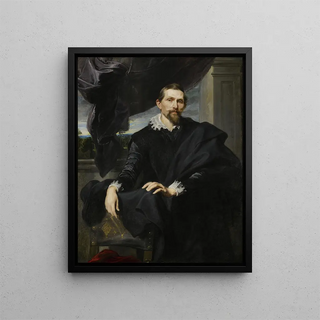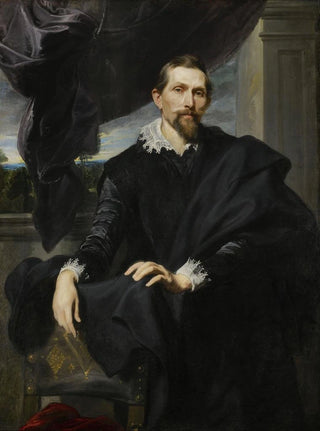Art print | Frans Snyders - Antoine van Dyck


View from behind

Frame (optional)
Frans Snyders - Antoine van Dyck Art print – Engaging introduction
The artwork "Frans Snyders - Antoine van Dyck" is a captivating encounter between two giants of 17th-century Flemish painting. In this composition, Snyders' talents, master of still life and hunting scenes, blend with the elegance and virtuosity of Antoine van Dyck, renowned for his refined portraits. Together, they immerse us in a universe where light and color intertwine to bring to life subjects rich in symbolism and emotion. This art print, faithful to the original, allows appreciation of the complexity of details and the harmony of forms, inviting the viewer to explore the subtleties of this iconic work.
Style and uniqueness of the work
The uniqueness of this piece lies in how Snyders and Van Dyck merge their respective styles. Snyders, with his mastery of textures and colors, manages to capture the richness of materials, whether it be animal flesh or the shine of fruits. Van Dyck, for his part, injects a psychological dimension into his characters, giving them rare depth and expressiveness. Together, they create a vibrant scene, where each element is carefully arranged to offer a captivating visual narrative. The colors, vibrant and harmonious, as well as the play of light, testify to impeccable technique, revealing the influence of natural light on Flemish compositions of the period.
The artist and his influence
Frans Snyders, born in Antwerp, is often considered the pioneer of still life in Flanders, a genre that experienced significant growth in the 17th century. His innovative approach inspired many artists, including Van Dyck, who knew how to incorporate these elements into his own works. Antoine van Dyck, a pupil of Rubens, established himself as one of the most prominent portraitists of his time, combining baroque grandeur with a touch of delicacy. Snyders' influence on Van Dyck is evident in how he handles natural elements and scene composition. Their artistic collaboration not only enriched their own practice but also left an indelible mark.

Matte finish

View from behind

Frame (optional)
Frans Snyders - Antoine van Dyck Art print – Engaging introduction
The artwork "Frans Snyders - Antoine van Dyck" is a captivating encounter between two giants of 17th-century Flemish painting. In this composition, Snyders' talents, master of still life and hunting scenes, blend with the elegance and virtuosity of Antoine van Dyck, renowned for his refined portraits. Together, they immerse us in a universe where light and color intertwine to bring to life subjects rich in symbolism and emotion. This art print, faithful to the original, allows appreciation of the complexity of details and the harmony of forms, inviting the viewer to explore the subtleties of this iconic work.
Style and uniqueness of the work
The uniqueness of this piece lies in how Snyders and Van Dyck merge their respective styles. Snyders, with his mastery of textures and colors, manages to capture the richness of materials, whether it be animal flesh or the shine of fruits. Van Dyck, for his part, injects a psychological dimension into his characters, giving them rare depth and expressiveness. Together, they create a vibrant scene, where each element is carefully arranged to offer a captivating visual narrative. The colors, vibrant and harmonious, as well as the play of light, testify to impeccable technique, revealing the influence of natural light on Flemish compositions of the period.
The artist and his influence
Frans Snyders, born in Antwerp, is often considered the pioneer of still life in Flanders, a genre that experienced significant growth in the 17th century. His innovative approach inspired many artists, including Van Dyck, who knew how to incorporate these elements into his own works. Antoine van Dyck, a pupil of Rubens, established himself as one of the most prominent portraitists of his time, combining baroque grandeur with a touch of delicacy. Snyders' influence on Van Dyck is evident in how he handles natural elements and scene composition. Their artistic collaboration not only enriched their own practice but also left an indelible mark.






